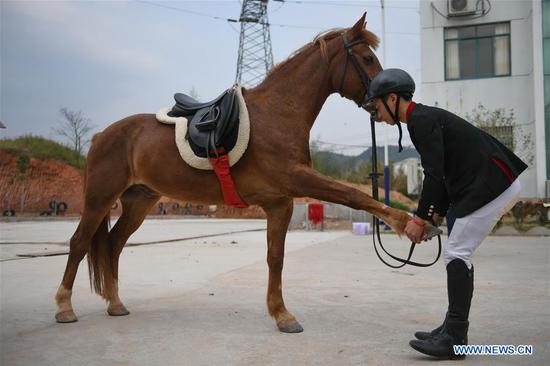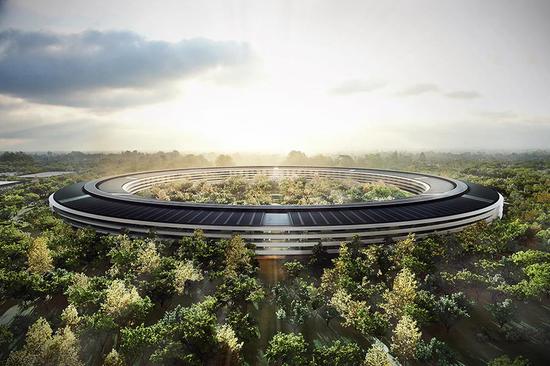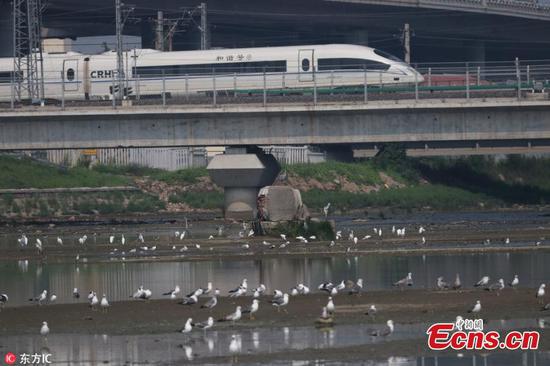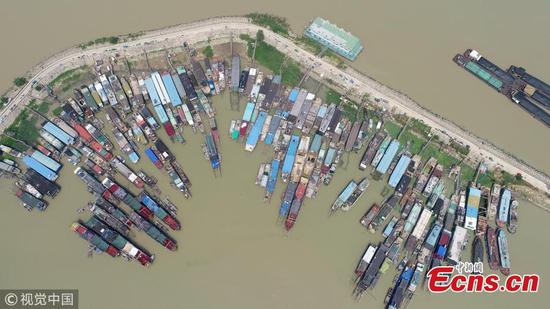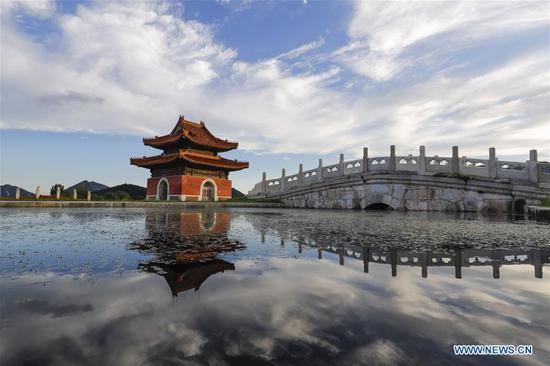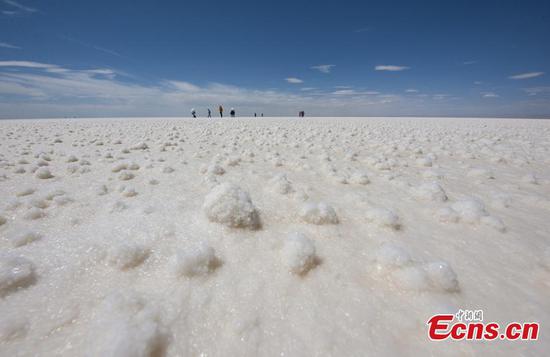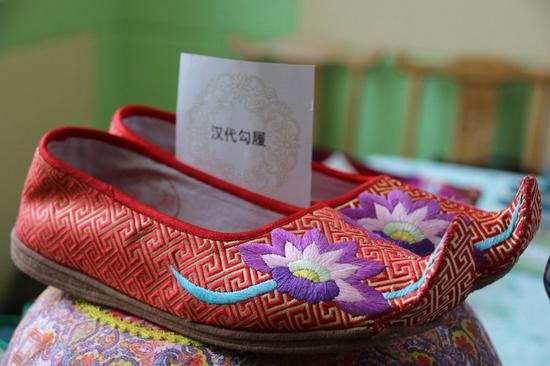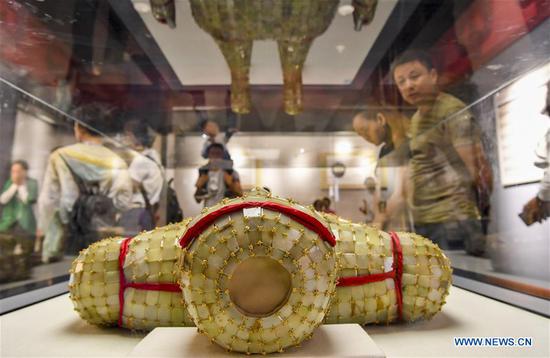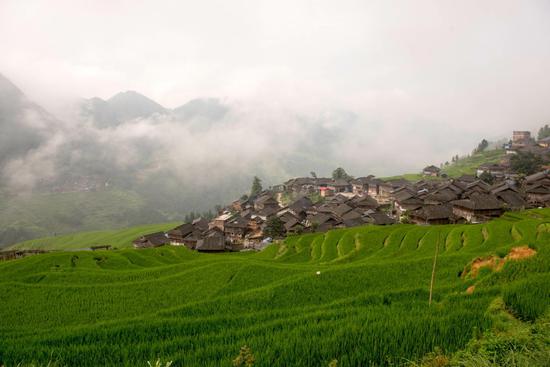
Two kissing cranes on a window bar. On the 24 window bars of the main hall of the more than 200-year-old Ancestral Hall of the Zhang Family in Lizhuang town in Yibin, Sichuan Province, are 48 carved cranes. There are two cranes on each window bar. (Photo by Huang Zhiling/China Daily)
People in Lizhuang, a more than 1,400-year-old town in Yibin in Sichuan Province, are confident their life will improve with the construction of the Yangtze River Economic Belt.
Residents of the 48,700 population town used to witness the discharge of untreated water into their mother river - the Yangtze.
In January, a plant which can treat 5,000 tons of water a day went into operation.
"With an investment of 80 million yuan (nearly $1.2 million), the plant with eight kilometers of pipelines, can ensure water discharged into the Yangtze River is up to the standards," said Zeng Xiangli, head of the Lizhuang town government.
Last year, 3.8 million visitors came to Lizhuang.
"Since our country started construction of the Yangtze Economic Belt two years ago, the local government has taken measures to improve the environment. That will bring more visitors and increase locals people's income," said Li Jun, a guide in the town.
Yibin has many firsts related to the Yangtze River.
It is known as the first city in the upper reaches of the mighty Yangtze River, cradle of the Chinese civilization. The river's name derives from the city at the juncture of the Minjiang and Jinsha rivers.
Lizhuang town is known as the first town along the Yangtze River.
Located on the southern bank of the river, Lizhuang started as a fishing village and developed into a thriving town.















